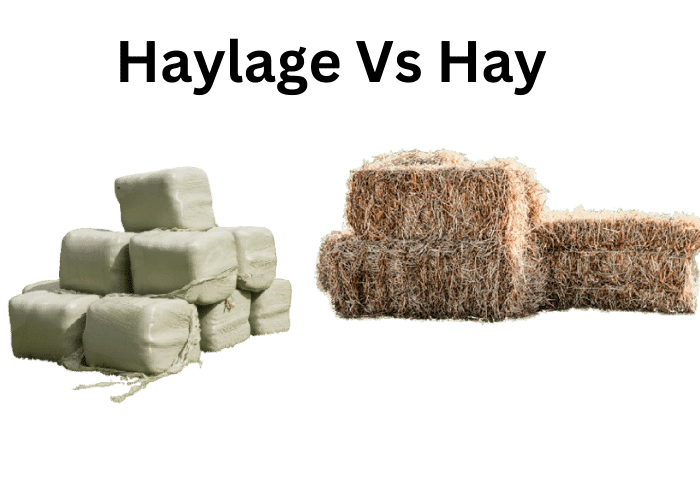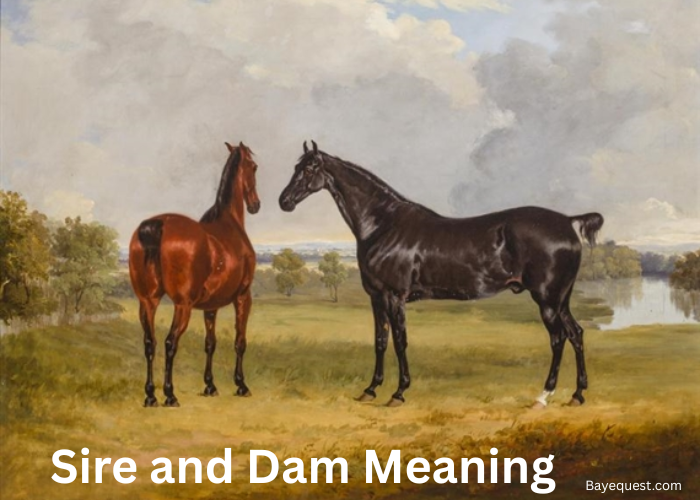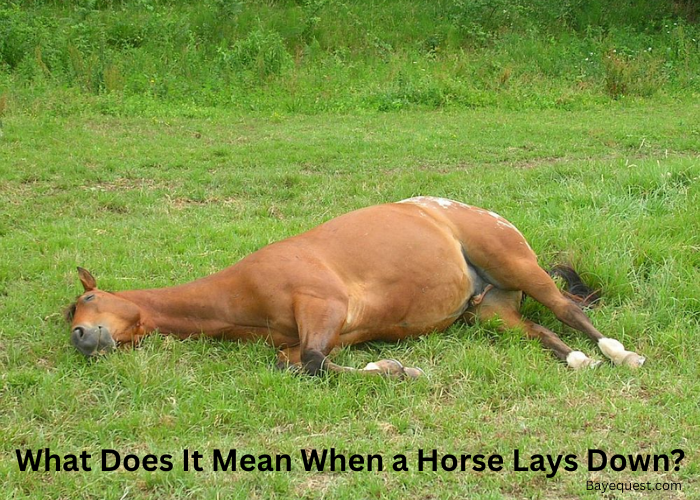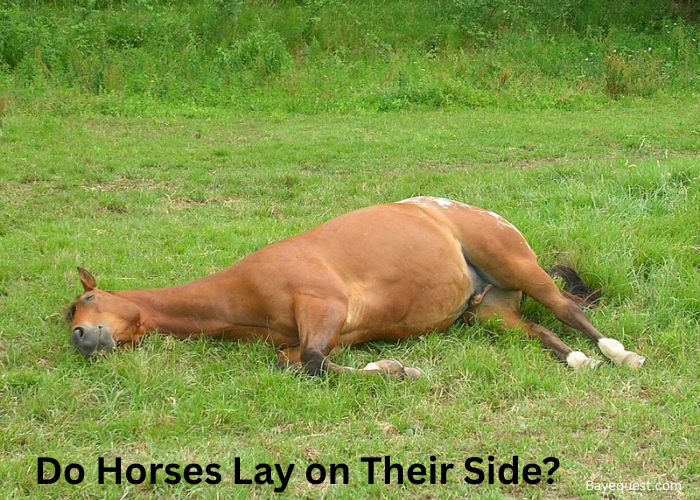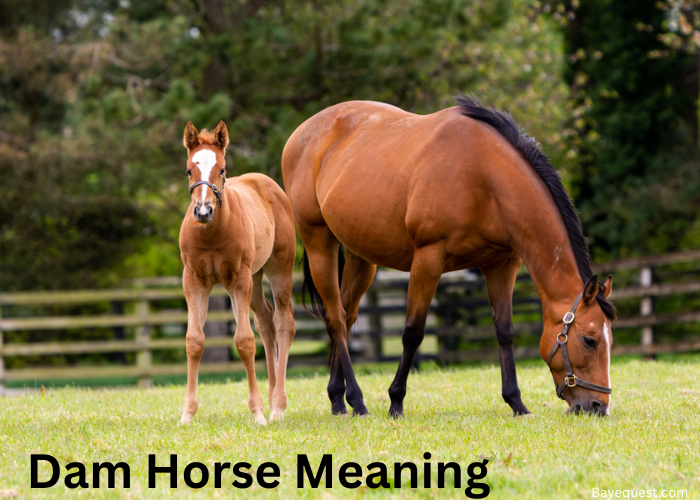Are you a farmer or livestock owner? If so, you know the importance of choosing the right feed. It can make all the difference in your animals’ health and productivity.
Today, we’re diving into the world of haylage and hay. What are they? How do they differ? And most importantly, which one is the best choice for your livestock?
Stay with us as we explore these questions, helping you make informed decisions for your farm. Get ready for some enlightening insights into the haylage vs hay debate.
What’s the Difference Between Hay and Haylage?
Haylage is younger, moister grass with lower dust and higher protein and energy levels than hay. It undergoes partial fermentation, enhancing digestibility. In contrast, hay is fully dried grass with a lower moisture content, making it more fibrous but less nutrient-dense compared to haylage.
What is Hay?
Hay is a feed for livestock made by cutting and drying grasses or legumes. This process helps preserve the nutrients.
Hay is usually made during summer to feed animals in the winter. There are many types of hay, like alfalfa and timothy, each with different nutrients.
Hay is important for animals’ health. It provides them with essential fiber and nutrients. However, making and storing hay requires care. If not done right, it can lose quality or even spoil.
In short, hay is a key part of livestock diets. It keeps animals healthy and happy all year round.
Pros and cons of hay
PROS
- Hay is a good source of fiber and essential nutrients for livestock.
- Properly dried hay can be stored for a long time without losing quality.
- Different types of hay can meet the diverse nutritional needs of various animals.
- Growing and harvesting hay can be economical, especially for large herds.
CONS
- The quality of hay depends on good weather conditions during cutting and drying.
- If not stored properly, hay can get moldy or infested, leading to animal waste and health risks.
- Hay’s nutritional content can vary depending on the type of plants, soil quality, and harvesting methods.
What is Haylage?
Haylage is like Hay’s cousin but with a twist. It’s also made from grasses or legumes but harvested at a higher moisture content.
After cutting, it’s packed tightly and sealed in plastic to ferment. This process is called ensiling. The fermentation preserves the feed, keeping it fresh and nutritious for longer.
Haylage has a higher nutritional value than dry hay. It’s especially popular for feeding horses and dairy cows, as the moisture in haylage makes it easier for animals to digest.
Plus, it’s less dusty, which is great for animals with respiratory issues. In short, haylage is a moist, nutritious, and easily digestible feed option for livestock.
Pros and cons of Haylage
PROS
- Haylage retains more nutrients and vitamins than dry hay, making it a richer feed.
- The higher moisture content in haylage makes it easier for animals to digest.
- Haylage is less dusty than hay, which benefits animals with respiratory issues.
- When properly sealed, haylage can last longer than hay without spoiling.
CONS
- If not sealed properly, haylage can spoil quickly due to exposure to air.
- Haylage requires airtight storage conditions, which can be more demanding than storing hay.
- Producing and storing haylage can be more expensive due to additional processing and packaging requirements.
- Haylage may not be as widely available as hay, especially in regions with drier climates.
Haylage Vs Hay: In-Depth Comparison
Welcome to our in-depth comparison of haylage and hay. These two feeds are staples in livestock diets, but they have their differences.
Are you wondering which one is better for your animals? Or maybe you’re curious about how they’re made?
You’re in the right place. In this comparison, we’ll dive into the details of haylage and hay.
Haylage Vs Hay: Nutritional value
When it comes to nutrition, haylage and hay are both good feeds for livestock. But there are some differences.
Here’s a simple nutrient comparison table for haylage vs. hay:
| Nutrient | Haylage | Hay |
|---|---|---|
| Moisture content | 35-55% | 10-15% |
| Protein | 10-20% | 8-15% |
| Energy (MJ/kg) | 9-11 MJ/kg | 7-9 MJ/kg |
| Fiber | Lower (due to higher moisture) | Higher (due to lower moisture) |
| Digestibility | Higher (due to partial fermentation) | Lower |
| Dust content | Lower | Higher, especially in poor-quality hay |
| Calcium | 0.6-0.9% | 0.3-0.6% |
| Phosphorus | 0.2-0.4% | 0.2-0.3% |
Hay Vs Haylage: Preservation method
Haylage is preserved through a process called ensiling.
First, grasses or legumes are cut and partially dried, retaining more moisture than hay. The material is then packed tightly into bales or silos and sealed with plastic.
This environment limits oxygen, allowing beneficial bacteria to ferment the plant sugars. This fermentation process creates acids that preserve the haylage. It’s like pickling vegetables to keep them fresh for longer.
Hay, on the other hand, is preserved by drying. After cutting, the grasses or legumes are left in the field to dry under the sun.
The goal is to reduce the moisture content to 15-20%. This low moisture level prevents the growth of mold and bacteria.
Once dry, the hay is baled and stored in a dry place. This process is similar to drying herbs or fruits to extend their shelf life.
In summary, haylage is preserved through fermentation, while hay is preserved by drying and reducing moisture content.
Hay or Haylage: Digestability
Haylage is known for its high digestibility. This is because it’s preserved at a higher moisture content.
The fermentation process in haylage also breaks down some plant fibers, making it easier for animals to digest.
Haylage provides animals with more nutrients. It’s like eating a well-cooked meal that’s easy to chew and digest.
Hay, conversely, is drier and has more intact plant fibers. This means it takes more work for animals to break it down in their digestive systems.
While hay is still a good source of fiber, it’s not as easily digested as haylage. It’s like eating a crunchy salad that takes more effort to chew.
Generally, haylage is more digestible than hay due to its higher moisture content and the fermentation process.
Haylage or Hay: Moisture content
Haylage has a higher moisture content compared to hay. It’s usually around 40-60%.
This higher moisture allows for the fermentation process that preserves the haylage. It’s like a damp sponge that’s been wrung out but is still moist.
Hay is much drier. Its moisture content is typically around 15-20%. This low moisture level prevents mold and bacteria growth, keeping the hay safe for storage.
In summary, haylage is more moist than hay. This difference in moisture content is key to how each is preserved and how they’re used as feed for livestock.
Hay and Haylage: Cutting
Haylage is usually cut when the grass or legume is in the early stages of growth. This is when the plant has a high moisture content and is rich in nutrients.
After cutting, the material is left to wilt briefly in the field. This slightly reduces the moisture content, making it ideal for fermentation.
Hay is typically cut a bit later in the plant’s growth cycle. The goal is to allow the plant to mature more, which increases the fiber content.
After cutting, the hay is left in the field to dry for longer. This significantly reduces the moisture content, making it safe for storage.
Haylage and Hay: Curing
Haylage curing is more about fermentation than drying. After cutting and wilting, the haylage is packed tightly in a silo or wrapped in plastic.
This creates an environment with little oxygen. In this environment, good bacteria start to ferment the sugars in the plant.
This fermentation process creates acids that preserve the haylage. It’s like making yogurt, where the bacteria ferment the milk sugars.
Hay curing is all about drying. After cutting, the hay is spread out in the field and turned regularly. This allows the sun and air to dry the hay evenly.
The goal is to reduce the moisture content to 15-20%, which will prevent mold and bacteria from growing.
Hay Versus Haylage: Storage
Haylage needs careful storage to keep its quality. It’s usually stored in airtight conditions, like in plastic wraps or sealed silos. This keeps the oxygen out and preserves the haylage through fermentation. It’s like storing leftovers in a sealed container to keep them fresh.
Hay is easier to store than haylage. It’s usually kept in bales in a barn or under a cover to keep it dry. Hay’s low moisture content means it doesn’t need airtight storage. It’s like storing dry goods in your pantry; they must be kept dry.
Haylage Versus Hay: Feeding and Shelflife
Feeding haylage is like serving a moist, nutritious meal. It’s often fed to horses who need extra nutrients and energy. Since haylage is more digestible, animals can get more out of it.
But, it’s important to feed it fresh once opened, as it can spoil quickly. It’s like opening a fresh bag of salad greens; you want to use it while it’s still crisp.
Hay, on the other hand, is like providing a staple, fiber-rich diet. It’s great for maintaining healthy digestion in animals like cattle and sheep.
Hay can be stored and fed over a longer period, making it a convenient choice. It’s like having a dry pasta supply in the pantry; it’s always ready when needed.
Factors to Consider When Choosing Between Hay and Haylage
Here are the factors to consider when choosing between haylage and hay:
Animal needs. Think about what your animals need. Haylage might be the better choice if they need more energy or have specific dietary requirements.
Storage. Consider your storage options. Haylage needs to be stored airtight and used quickly once opened. Hay is easier to store and lasts longer.
Cost. Look at your budget. Haylage can be more expensive due to its higher nutritional value and storage requirements.
Availability. Check what’s available in your area. In some places, hay might be more readily available than haylage.
Health Issues. If your animals have respiratory problems, haylage might be better as it’s less dusty than hay.
Hay Vs Haylage: Which One is Better?
When it comes to choosing between hay and haylage, there’s no one-size-fits-all answer. It depends on your animals’ needs and your farm setup.
Haylage is great if you’re looking for a feed that’s high in nutrients and easy to digest. It’s a good choice for animals that need a lot of energy, like performance horses. But once opened, it does need careful storage and quick use.
Conversely, Hay is a solid choice for providing fiber and keeping animals’ digestion in good shape. It’s easier to store and handle than haylage, making it a convenient option for many farmers.
Ultimately, the best choice depends on your animals and your farm. Both hay and haylage have benefits, so it’s about finding the right balance for your needs.
Read also: Grain-free horse feeds.
Horse Health Issues Caused by Overfeeding Haylage and Hay
Laminitis
Overfeeding haylage, which is often richer in sugars than hay, can lead to a surge in insulin levels in horses. This hormonal imbalance disrupts blood flow to the laminae in the hooves, causing inflammation and severe pain.
It’s a bit like how eating too much sugar can lead to health issues in humans. For horses prone to laminitis, monitoring their intake of richer feeds like haylage is crucial.
Colic
Both hay and haylage can cause colic if not introduced gradually or fed excessively. Colic refers to abdominal pain resulting from gastrointestinal disturbances.
Hay’s dryness could be a risk, leading to impaction colic if the horse doesn’t drink enough water. Haylage’s richer nutrient profile might also contribute to the risk, leading to gas or spasmodic colic.
Diarrhoea
Haylage, with its higher moisture content, can cause diarrhoea if a horse’s digestive system is not accustomed to it. This can lead to dehydration and electrolyte imbalances, much like how a sudden change in a human’s diet can upset their stomach.
To minimize this risk, haylage should be introduced gradually to ensure it’s of good quality.
Weight gain
Haylage is generally more calorie-dense than hay due to its higher nutrient content. Overfeeding haylage can lead to weight gain and associated health issues, such as metabolic syndrome.
It’s akin to how humans can gain weight if they consume more calories than they burn.
Read also: How Much Does a Bale of Hay Weigh?
Alternatives of Hay and Haylage
There are several alternatives to hay and haylage that you can consider for feeding your livestock:
Silage. Silage is similar to haylage but made from fermented corn, sorghum, or other cereal crops. It’s high in energy and good for ruminants like cows and sheep.
Straw. Straw is the dry stalks of cereal plants after the grain has been harvested. It’s low in nutrients but can be used as a roughage source or bedding material.
Chaff. Chaff is chopped hay or straw that’s often mixed with other feeds. It’s easier to digest and can be used to bulk up feed rations.
Grain-based feeds. These include oats, barley, and corn. They’re high in energy and can be used to supplement a forage-based diet.
Pelleted feeds. These are compressed pellets made from hay, grains, and other ingredients. They’re convenient to store and feed, and can be a good option for animals with dental issues.
Beet pulp. This is a byproduct of sugar beet processing. It’s high in fiber and a good energy source, often used as a hay extender or to add bulk to the diet.
Commercial feed mixes. These are pre-made mixes of grains, minerals, and vitamins. They’re formulated to meet specific nutritional needs and can be convenient.
Related read: Shavings Vs Straw.
When Can I Feed this Year’s Hay of Haylage?
You can start feeding this year’s hay a few weeks after it’s been baled. Give it time to cure properly. This means letting it dry out so it’s safe to store and won’t mold. Once it’s dry and stored properly, it’s good to go.
Haylage is a bit different because it needs to ferment. After it’s baled and wrapped, it should sit for about six to eight weeks. This fermentation process is what preserves it. Once it’s had time to ferment, you can start feeding it to your animals.
In both cases, it’s a good idea to check the feed before you give it to your animals. Make sure it’s free from mold and smells fresh. If it looks and smells good, it’s usually safe to feed.
Related read: How Much is a Hay Bale?
FAQs
Can I use haylage for a horse with ulcers?
Yes, you can use haylage for a horse with ulcers. Haylage is often softer and less dusty than hay, which can be gentler on a horse’s digestive system. However, introduce the haylage gradually and monitor your horse’s condition closely.
Read also: How to treat ulcers in horses naturally.
Can haylage and hay be fed together?
Yes, haylage and hay can be fed together. Mixing the two can provide a balanced diet and help meet your horse’s nutritional needs. Ensure that the total diet is appropriate for your horse’s health and activity level.
How long can haylage be stored before it spoils?
Haylage can be stored for up to 12 months if properly sealed and kept in a cool, dry place. Once opened, it should be used within a few days to prevent spoilage and ensure it remains fresh and safe for your horse to eat.
Conclusion
Choosing between haylage and hay is like picking the right key for a lock. Each has its unique benefits and fits different needs.
Haylage offers a nutrient-rich, easily digestible option, perfect for horses needing extra energy. Hay, on the other hand, provides essential fiber and is a reliable staple for many animals.
Remember, the best choice depends on your horse’s needs and your farm’s resources.
By weighing the pros and cons, you can unlock the best diet for your animals, ensuring their health and happiness.
Next, have a look at our post on how many bales of hay you can get from an acre. It’s a must-read for better planning and smarter harvests.




